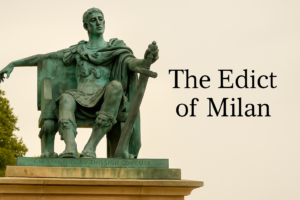Introduction
Chinese Buddhism represents a unique and profound synthesis of traditional Buddhist teachings with Chinese cultural and philosophical traditions. As Buddhism spread from India to China over two millennia ago, it underwent significant transformations, blending with indigenous beliefs like Confucianism and Taoism to create a distinctive spiritual and cultural phenomenon.
Historical Background
Buddhism was introduced to China during the Han dynasty, around the 1st century CE. Initially met with resistance and skepticism, it gradually gained acceptance, particularly during the Six Dynasties period (220-589 CE). The translation of Buddhist scriptures into Chinese and the establishment of monasteries played crucial roles in its spread. Over time, Chinese Buddhism diverged from its Indian roots, giving rise to new schools and sects that reflected the local culture and thought.

Major Schools of Chinese Buddhism
Chinese Buddhism is primarily characterized by three major schools: Chan (Zen) Buddhism, Pure Land Buddhism, and Tiantai Buddhism.
– Chan Buddhism: Originating in China, Chan Buddhism emphasizes meditation and direct experience of enlightenment, downplaying the importance of scriptures and rituals. It later spread to Japan, where it became known as Zen Buddhism.
– Pure Land Buddhism: This school focuses on the veneration of Amitabha Buddha and the belief in the Western Pure Land, a paradise where practitioners can be reborn and attain enlightenment. It became popular among the common people for its accessible and devotional practices.
– Tiantai Buddhism: Named after Mount Tiantai, where it was founded, this school synthesizes various Buddhist teachings and practices, emphasizing the Lotus Sutra as the highest expression of the Buddha’s teachings.
Influence of Confucianism and Taoism
Chinese Buddhism did not exist in isolation but interacted closely with the dominant philosophies of Confucianism and Taoism. Confucianism, with its emphasis on social order, ethics, and family, influenced the moral and ethical dimensions of Chinese Buddhism. Taoism, with its focus on harmony with nature and the pursuit of immortality, contributed to the development of Buddhist concepts related to meditation, health, and alchemy.
Monastic Life and Practices
Monastic life is central to Chinese Buddhism. Monasteries serve not only as places of worship but also as centers of learning, culture, and community life. Monks and nuns follow strict precepts, engage in meditation, and study Buddhist texts. The daily routine in a Chinese Buddhist monastery often includes chanting, meditation, and rituals dedicated to various Buddhas and bodhisattvas.
Cultural Contributions
Chinese Buddhism has profoundly influenced Chinese art, literature, philosophy, and architecture. Buddhist temples, pagodas, and statues are iconic symbols of Chinese culture. The philosophy of Chan Buddhism, with its emphasis on simplicity and spontaneity, has inspired countless works of art and poetry. Additionally, Buddhist concepts of compassion, karma, and the cycle of rebirth have permeated Chinese thought and literature.
Modern Chinese Buddhism
In contemporary times, Chinese Buddhism continues to thrive both in China and among Chinese communities worldwide. Despite historical challenges, including periods of persecution, Chinese Buddhism has adapted to modern society, embracing new forms of communication, education, and social engagement. Today, it remains a vital and dynamic force in the spiritual and cultural life of Chinese people.
Conclusion
Chinese Buddhism stands as a testament to the adaptability and resilience of Buddhist teachings. Through its integration with Chinese culture and philosophy, it has created a rich and diverse tradition that continues to inspire and guide millions of practitioners. As a harmonious fusion of faith and culture, Chinese Buddhism offers profound insights into the human experience and the pursuit of spiritual awakening.
Summary
Chinese Buddhism is a major branch of Buddhism that has deeply influenced Chinese culture, philosophy, and spiritual practices. It blends traditional Buddhist teachings with Chinese philosophical traditions such as Confucianism and Taoism.







